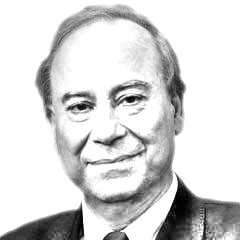
As an immigrant Muslim living in the west, I’m sometimes distressed at descriptions of my faith as a violent, irrational death cult. In Europe, the Dutch politician Geert Wilders has referred to Islam as “the ideology of a retarded culture” and “a totalitarian cult with global ambitions,” and in the US, Presidential adviser Steve Bannon has called Islam worse than Nazism and communism, saying, “You could look in 1938 and say, “Look, it’s pretty dark here in Europe right now, but there’s something actually much darker. And that is Islam.” Ben Carson during the US presidential campaign let his imagination run wild and compared Syrian refugees to “rabid dogs.” President Donald Trump promised to ban all Muslims from the United States, and for the first time in its history, the US passed an order banning the entrance of Muslims from certain countries. In Poland in July this year, Trump addressed a large cheering audience in which he resuscitated Huntington’s theory of the Clash of Civilizations with Western civilization under attack by “Islamic radicals.”
Such rhetoric that dangerously conflates Muslims and terrorists, and seeks to inflame the idea of a “clash of civilizations,” is nothing new. But it has made it especially difficult to be a Muslim today in America and Europe. In 2016 alone, the US saw at least 385 instances of documented Islamophobia, according to the Huffington Post, many in the form of assaults on mosques, women in hijab and “Mid East looking” men. The graph is moving steadily upwards. And Europe is experiencing a surge of anti-Muslim incidents as well, with a group of congregants being attacked in London right as they were leaving their mosque in the heart of Ramadan.
The Islamic community is divided into three broad categories:
Literalist Muslims who attempt to interpret the religious text exactly; mystic Muslims who seek the universal oneness of God; and finally the modernists who balance Islam with modernity
Meanwhile, acts of terror committed in the name of a distorted version of Islam ? from Orlando and Manchesterto Paris, London and Baghdad ? continue to dominate media coverage. Groups like ISIS claim responsibility, and Westerners become ever more fearful of “the other.” In the atmosphere of Islamophobia in the West, this “other,” more often than not, takes the form of an immigrant Muslim who is seen to have a hatred for Western society and culture. This is despite the fact that the statistics challenge this assumption. A significant amount of those who carry out attacks are in fact natives of Western countries who maynot even be religious. Also, the vast majority of the people killed by these terrorists outside of the West are not Muslims.
When looking at Muslims, Westerners completely miss a significant part of the community, the converts. In order to better understand the diversity and complexity of Islam in the West today, we will hear in this series over the next few weeks the voices of Western Muslim converts. They are natives of England, Denmark, and Germany and they too represent Islam. They include a Cambridge scholar, an imam, a music director and a television presenter and author. In short as diverse a group as one can expect. This will not be a touristic depiction of Westerners infatuated with exotic Oriental religion, but an account backed by solid ethnography to point out the serious flaws in the understanding of Islam today by many in the West.
By overlooking such a vital component of the Muslim community, Westerners are missing those people ideally suited to provide a bridge between the West and Islam. This blindness means that the West is not able to understand the Muslim community and will thus make the wrong assumptions and take the wrong actions. Thus, it is conforming to the definition of insanity attributed to Einstein: to repeat the same thing over and over and expect a different result. We are in a dead-end currently and such a warped understanding of Islam and the Muslim community is going to land us in trouble and as a consequence we are going to sink deeper and deeper. A discussion about Western converts is therefore essential.
It is important in our exploration of Western converts to situate them in the larger Muslim religious community. In a quartet of projects about the relationship between Islam and the West, the most recent being Journey into Europe: Islam, Immigration, and Identity (Brookings Institution Press, 2018), I have noted that the Islamic community is divided into three broad categories: Literalist Muslims who attempt to interpret the religious text exactly; mystic Muslims who seek the universal oneness of God; and finally the modernists who balance Islam with modernity—examples include the Quaid-e-Azam and, more recently, Malala Yousafzai. While Western converts gravitate towards all three categories, mainly I have found them to be firmly in the modernist camp. This is natural because they are proud to be both Western and Muslim and see no contradiction between the two.
There are hundreds of thousands of Western converts who embody this balance-they are fully Western and Muslim-and I cannot stress enough how significant this is in the current environment and debate about Islam. If the West does not begin to recognize and listen to its Muslim converts, the distortions of Islam will continue to prevail and the bleak downward spiral in relations between Muslims and non-Muslims will continue. Western Muslim converts directly challenge the Islamophobic stereotypes and are full of wisdom and ideas on how to bridge Islamic and Western culture. Through this series, we will have an opportunity to get to know some of them.
The writer is an author, poet, filmmaker, playwright, and is the Ibn Khaldun Chair of Islamic Studies, American University in Washington, D.C. He formerly served as the Pakistani High Commissioner to the UK and Ireland.
He tweets @AskAkbar
Published in Daily Times, July 15th , 2017.
